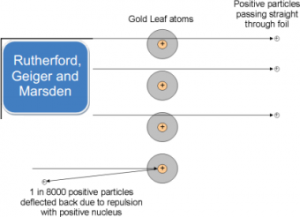Rutherford, Marsden and Geigers experiment
Astronomy - presentations
[[|<<<]]
[[|>>>]]
This resource may not be final.
Lesson idea. This presentation diverges from pure astronomy to cover the work of scientists in understanding our universe. Students possibly believe that we have always known what the world is made from. And, even that we actually know now! But these slides tell how theories of the atom developed over many years. An audio file fills in detail. (The next in this series considers how gases interact in the gas laws).
Teaching approach. The lesson model is that of active note-making. Students must not take notes from the board but instead must use their creativity to develop their own notes. They are encouraged to use colour, image, symbols, humour and metaphor to lead them through a richer learning experience. Students need help in achieving this but soon catch onto the idea. They become more independent with taking notes and more attentive to the subject at hand. The teacher keeps a clear focus to use open rather than closed questioning throughout. (edit)
| Resource details | |
| Title | Rutherford, Marsden and Geigers experiment |
| Topic | |
| Teaching approach | |
| Learning Objectives |
|
| Format / structure | |
| Subject | |
| Age of students / grade | |
| Table of contents | |
| Additional Resources/material needed | |
| Useful information | |
| Related ORBIT Wiki Resources | |
| Other (e.g. time frame) | |
| Files and resources to view and download |
The presentation has been converted to alternative formats:
|
| Acknowledgement | |
| License | |


